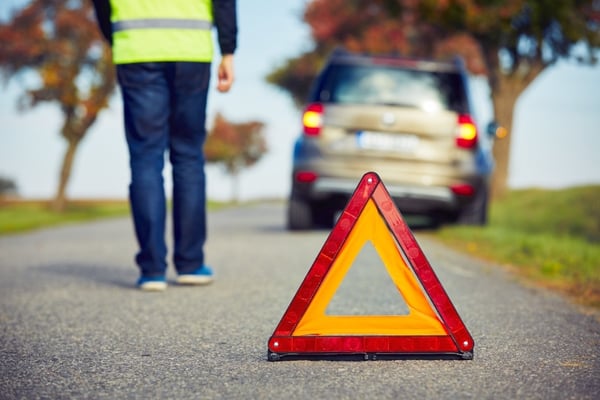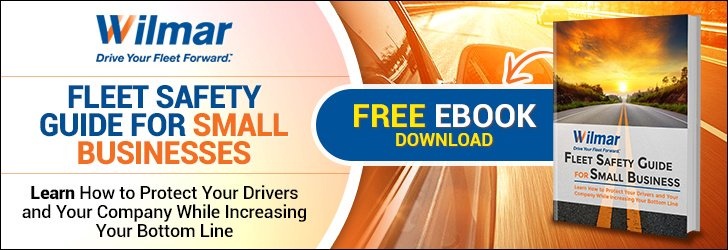
Does your field service fleet provide roadside assistance? Drivers who run into trouble on the road often need to pull over and call for professional help in a variety of situations. Mechanics, tow truck operators, and locksmiths often find themselves called out to dangerous roadside situations where it is necessary to render assistance as cars rush by at 60 or more miles per hour.
Roadside shoulders are often not wide enough for comfort and without proper precautions, people or vehicles can be at serious risk of damage.
Every fleet driver that provides roadside services needs to be equipped and prepared to make the scene as safe as possible and to protect themselves and the customer from potential harm. The following five safety tips should help you do just that.
1) Travel With Flares, Cones, and Reflectors
No matter what kind of roadside assistance you provide, it is vital that your roadside work areas be highly visible. The sooner drivers on the road notice your work area, the sooner they can get left to give you space or slow down to reduce the chance of any accidental collisions.
Every fleet vehicle that has a chance of responding to a roadside service call needs to be equipped with a variety of reflective and self-illuminating supplies. Bright orange cones or the smaller reflective traffic triangles are a great place to start, along with flares and reflectors for particularly dark or faintly painted roadside situations.
We also recommend that you pack enough reflective safety vests not just for your team, but for four to five customers as well. In a tight-shoulder situation, this could be a life or death consideration.
2) Prepare to Exit and Enter on the Passenger Side
When preparing your vehicles, you should also seriously consider the safety of exiting on either side of the vehicle. Many roadside situations will have limiting or highly dangerous factors that will make one side of the vehicle or the other safer to open and exit through.
Narrow shoulders can make driver-side exits dangerous while side-railings can make passenger-side exits impossible when pulled safely over.
The driver should be able to climb over the central console and exit on the passenger's side if this is the safer option, as should anyone in the back of the vehicle. Likewise, it should be possible for passenger-side crew to exit on the driver's side if necessary.
3) Get the Customers to Safety
Once you arrive on the scene, turn on your hazard lights. Your first priority beyond parking fully out of the road and exiting on the safest side is to secure your customers. If they are in a dangerous area, ask them to slip on reflective vests and to stay fully off the road during the service.
If the weather is bad or if your customers seem emotionally distraught by the situation, it may be more effective and safe to invite them to sit in the truck.
You may want to pack blankets, towels, or thermoses of hot chocolate if you often rescue customers from dark, cold, or rainy roads.
4) Establish a Safe and Highly Visible Work Area
Once your customers are holding still a safe distance from the rushing traffic, you can focus on securing the area for whatever work you came to do.
Start setting out reflective cones and self-illuminating area markers around a wide perimeter, starting several meters behind your truck, out to the shoulder line, and several meters ahead of your customer's car. If it is rainy or dark, use flairs to make your scene highly visible and custom hazard lights if your vehicle is equipped with them.
This perimeter should keep you, your team, and your customers safe during the roadside part of this service so that no oncoming traffic goes by too quickly or risks hitting any stopped vehicles or people outside a vehicle.
5) Illuminate Your Work
Finally, set up bright directional lamps to point at whatever you were called in to work on. Whether this is a jump, lockpicking, roadside repairs, or hooking up the vehicle for towing, you want to be able to clearly see what you're doing.
A flexible clamp lamp may be all that is necessary or you can bring a large light panel on a stand, whichever is more appropriate for the services you provide. But the better illuminated your work is, the more quickly and safely it can be completed.
When the roadside work is complete, either take the customers back to HQ in your vehicle or re-collect your safety vests and send them on their way in a freshly working car.
With these precautions, you should be able to manage almost every roadside situation with zero additional injuries, accidents, or unnecessary risk. For more information about fleet management and safety best practices, contact us today.







